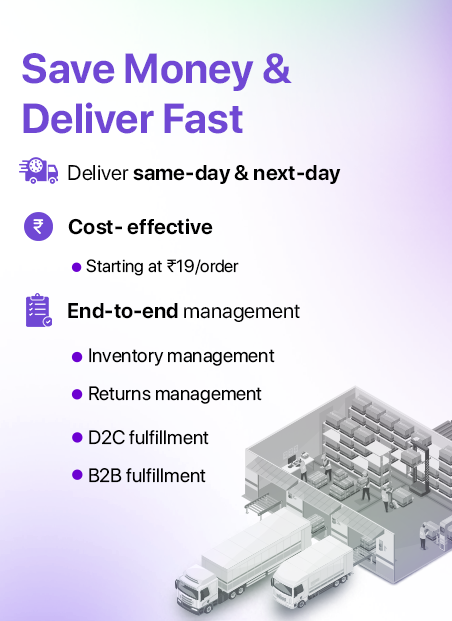SKU is short for Stock Keeping Unit. It is a unique code assigned to different items in the inventory. The purpose of assigning inventory SKUs to different items in the store is to identify and track the inventory with greater ease. SKUs are a mix of alphabets and numbers. The alphanumeric code usually includes the first letter of the brand name, manufacturer, product’s colour, etc. Likewise, the numbers in this code usually include the size and other similar features. Companies issue SKUs for different products they sell. In the year 2022, the vehicles and automobile parts category had the highest median volume of SKUs. It stood at 7,937 per online store. On the other hand, food, beverages and tobacco categories had the lowest median SKU volume with just 730 SKUs per online store. Home and garden grabbed the second spot at 6819 followed by apparel, accessories and electronics at 6,000 plus SKUs per online store.

In this article, you will learn all about inventory SKUs including where they are used, their role, and how they differ from other codes.
SKU: Things to Know
An inventory SKU is a scannable bar code assigned to different items offered by a company. It is mostly mentioned on the product labels. The alphanumeric code is carefully chosen and assigned to different items mainly for the convenience of the warehouse and retail store staff. It enables them to track the movement of the inventory with ease. It shows the product price, manufacturer, point of sales and details of the product among other things. It facilitates better inventory management and enhanced service in addition to lowering the effort involved in the process.
Comprising of around eight characters, SKUs are even allotted to intangible products that are billable in nature. For instance, these are allotted to e-books, digital artwork, online courses and software programs among other things. They are also assigned to repair time units, warranties and services.
SKUs enable shoppers to compare the features and prices of similar items offered by different brands. Moreover, online sellers can leverage them to upsell their products. How? Well, they can do so by showcasing items similar to those purchased by the shoppers or the ones they have added in the cart easily by identifying their SKUs. This can prompt the shoppers to make additional purchases and increase the company’s revenue. Collecting sales data has become easier with the inclusion of SKUs. Store staff can easily segregate the top selling products from the rest on the basis of the scanned SKUs and POS data.
An SKU is also referred to as a product ID number or part number. It should not be confused with model numbers. However, at times, model numbers form a part of the SKUs. SKUs are not standardised. They are specific to businesses. Companies customise SKUs to meet their unique demands and those of their vendors.
Where Do SKUs Play a Role?
Inventory SKUs often appear as QR codes or bar codes but are not the same as UPC (Universal Product Code) barcodes.
- SKUs play an important role in warehouses, retail stores and product fulfillment centers.
- Their use extends to catalogs and electronic retailing.
- They have a key role to play in inventory management. They enable the vendors to understand which products need to be reordered and which ones are adequately stocked.
- They help in systematically managing the inventory by lowering the time, effort and manpower involved in the process. When a customer purchases a product, the POS (point-of-sale) system scans the SKU of that particular item and it is immediately removed from the inventory. Thus, the warehouse, retail store or product fulfillment center staff will get a clear idea about the inventory count. This can help avoid the problem of understocking as well as overstocking of products. Research shows that by addressing the issues of understocking and overstocking, business owners can reduce their inventory costs by 10%.
How are SKUs Created?
Creating these alphanumeric codes is a tedious task. They must be created with precision to ensure seamless management of inventory. Every company, warehouse and fulfillment center has its own unique set of SKUs. This is to say that every facility even though a part of the same retail chain has a different SKU for each of its items. Though companies use their exclusive algorithm to generate SKUs for their products, everyone follows some specific rules for their creation. It has unanimously been agreed that SKUs should be human-readable. There should be no need for any kind of equipment to break down and read the code. Mentioning alphabets/ numbers indicating the product’s size, colour, material and brand to form this unit is mostly common to all. For instance, to create the SKU of a pink, floral bed sheet by Bombay Dyeing, you can use the first alphabets of its brand, product and colour. The numbers usually contain its manufacturer’s identification number, the product’s size and other similar information. So, its SKU may look like BDBP8186.
Companies must share their method of generating SKUs with their staff members for better understanding among them. It is suggested to begin the SKU with a letter as this way it is easier to distinguish. Your SKU should be easy to read and comprehend.
SKU Vs. Barcodes
As stated above, SKUs are not the same as UPC bar codes. They are not even the same as barcodes. These are distinct codes used for different purposes. While an SKU is a unique code that businesses create to manage their inventory and keep track of their sales, a UPC is the same across channels. Used externally to identify different products sold in various stores, a UPC barcode is a 12-digit code. It contains the same information regardless of the seller. This includes the name of the manufacturer, item details and product line. It does not contain alphabets. An example of a UPC can be 894563988224.
On the other hand, barcodes are different from these two. Barcodes cannot be read by humans. They mostly comprise 12 digits represented in the form of lines and spaces. You need special equipment to read and scan these codes. Barcodes are encoded with information about the product but not the company selling it.
Conclusion
SKUs have become integral to businesses owing to the numerous benefits they offer. Research findings show that 34% of businesses have faced situations where they have sold a product oblivious to the fact that it is no longer available in their inventory. Situations such as these can create dissatisfaction among customers and bring a bad name to the organisation. This particular issue can be overcome by allotting SKUs to products. As shared earlier, an SKU aids in keeping track of the inventory effortlessly. It enables the sellers to learn which of their items are selling well and which ones are not in demand. So, they can restock the items timely to maintain a continuous supply of products. In addition to this, SKUs help maintain sales records, encourage additional purchases and boost company revenue. It is important to assign the SKUs carefully to each item for smooth operation.
Yes, manufacturers also assign SKUs to their products. It is easier for them to manage the items stored in the warehouses systematically when they have SKUs assigned to them. Just like retailers, manufacturers can also track and restock their inventory with ease with the use of SKUs.
Each retailer assigns SKUs to his products. Manufacturers can also assign SKU’s to their products to keep them sorted. SKUs are assigned for internal use only unlike Universal Product Codes and Barcodes that are used universally.
The use of SKUs has certainly helped businesses streamline their inventory management process. These unique codes help track the products in your inventory with ease. The SKU data provides accurate status of your inventory. It gives a clear understanding of what to restock and what to replace at the right time.





